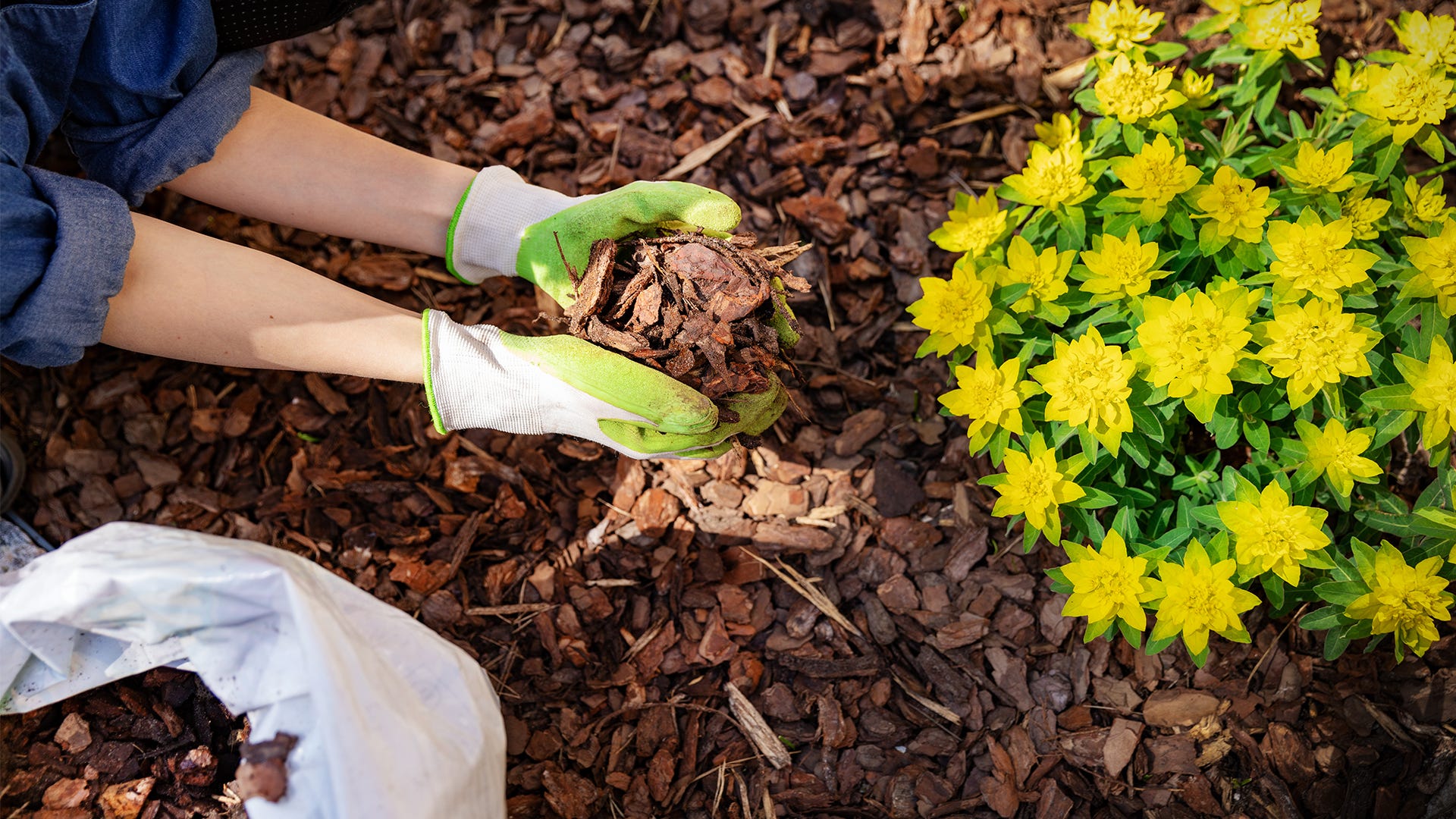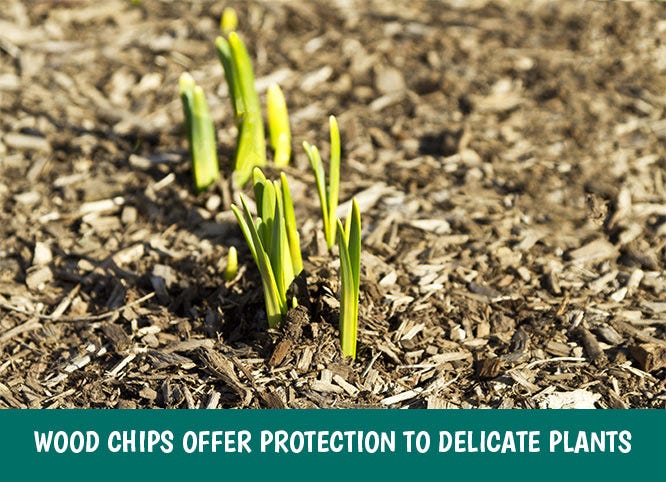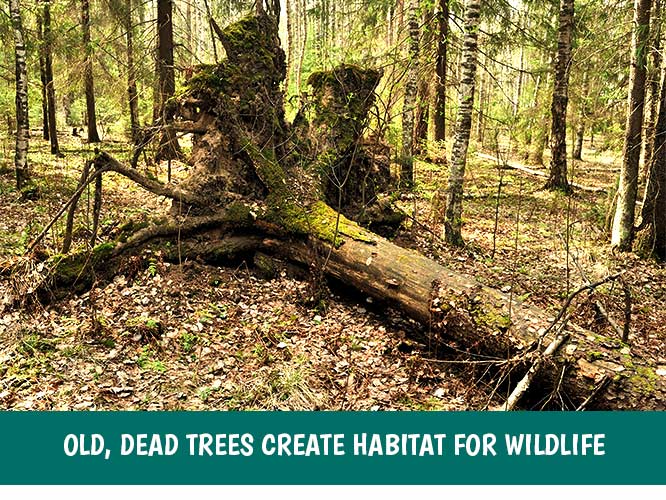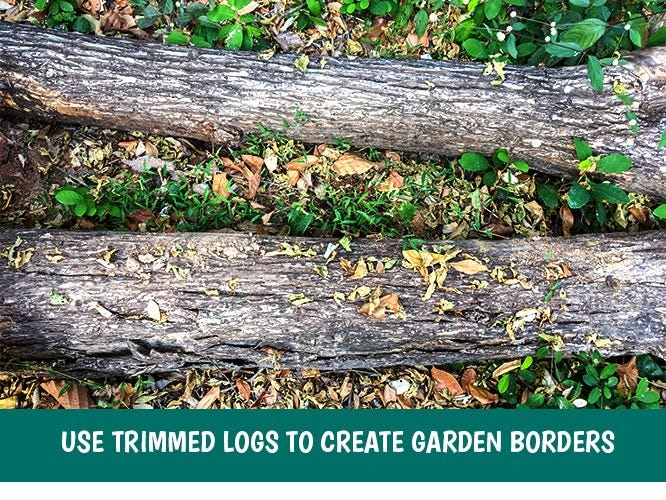
Conventional wisdom says to keep wood away from your garden. As it decomposes, it will rob your soil of nitrogen and block seeds from germinating. Both of those statements are true, but there are still some very good reasons for bringing wood chips and logs into your garden.

USES FOR WOOD CHIPS
Before you bring in wood chips to your garden, know what is meant by wood chips. “Wood chips,” in this case, means the shredded remains of a tree, especially green leaves and fresh branches. Wood chips shouldn't just be shredded bark, wood shavings or sawdust.
Here’s what you can do with wood chips:
- Mulching Around Plants – Wood chips can be used to keep your plants safe from cold snaps. Pile the wood chips around the stem and root base until the temperature recovers. They can also keep weeds away.
- Creating Paths – Use fresh wood chips to create paths between your plant rows. These paths will provide you with easy-to-navigate walking paths and work space.
- Nutrition Boost or Nitrogen Drain? – The conventional wisdom is that wood chips in a garden bed sucks the nitrogen out of your soil. That is the case, for the first inch or so! But under that? You’ll see a great boost in nutrients. Ready to plant? Scrape off the wood chips and sow your seed in the compost that developed underneath it. If you’re worried about nitrogen loss, apply a high-nitrogen granular fertilizer to help your soil and compost bounce back.
- Stop Weed Germination – Wood chips of any kind will reduce weed germination. Wherever you don’t want plants growing without your guidance, place wood chips over the exposed soil.
- Moisture Protection – If your area is going through a heat wave or you’re struggling through a drought, a layer of wood chips can lock moisture in the ground so your plants can use it before it evaporates.

USES FOR STUMPS, SNAGS AND LOGS
Another option for getting wood products to help you out is by using snags (fallen trees) and untreated logs or branches (timber). These may need to have excess branches removed or be cut to shorter lengths to be really useful, but after that, you’ll love them.
Here are some ideas on how to use snags and logs in your garden:
- Provide Additional Habitat – Stumps, snags and untreated logs are great ways to provide additional habitat for wildlife. Animals large and small can use these areas for shelter thanks to the wind-blocks, burrows and cavities they create. Whether they hide inside or under these wood features, you can truly help animals that are struggling to find suitable habitat in the modern world.
- Attract Pest-eating Wildlife – Beyond helping all types of wildlife, stumps, snags and untreated logs can also attract pest-eating animals, including specific varieties of birds, predatory insects and other helpful insectivores. Many of these animals specifically choose nests in the cavities created in and under decaying trees.
- Logs Create Nice Borders – Setting logs end-to-end can make for a great border around your garden. Sink them a few inches into the soil to help with decomposition and make lawn mowing a breeze. With them running around the border of your garden, it will be easier to manage compost and water application. The wood will eventually decompose and attract helpful insects, too.
- Compost starter – Natural wood can be composted, but it generally takes a long time to do so. Large pieces of wood can make it difficult to turn your compost pile. Still, wood provides great nutrients to a compost pile. You may be able to speed up the process with Ringer® Compost Plus Compost Starter.
- Snags Make Beautiful Focal Points – Planning a new flowerbed? Use a stump or snag as the centerpiece. It’s harsh features have a natural beauty that will be accented by the flowers. In the winter, a snag provides a striking vision on its own. Don’t hesitate to “sculpt” the snag to fit your needs – reduce its size or volume with a few well-planned cuts.

HELP FROM SAFER® BRAND IN YOUR GARDEN
Looking for more ideas for your lawn and garden? Safer® Brand has a wide variety of articles like this one that we regularly feature on the Safer® Brand Facebook page and as part of our E-Newsletter. The Safer® Brand E-Newsletter includes helpful articles to help you get the most out of your garden, lawn and household plants.



